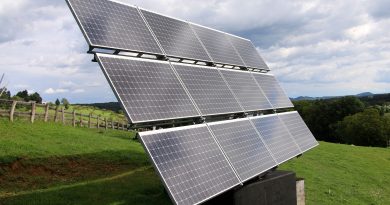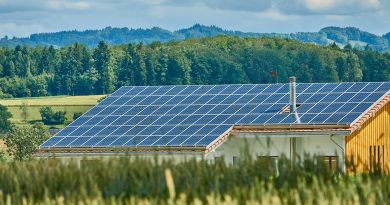What’s the procedure to install solar panels at home in India?
Solar energy is becoming increasingly popular as a renewable and sustainable source of power. With its vast potential in a country like India, where sunlit days are abundant throughout the year, the installation of solar panels at home is a viable option to reduce electricity bills and contribute to a sustainable future. In this article, we will guide you through the step-by-step procedure to install solar panels at home in India, enabling you to harness the power of the sun.
Evaluating the Solar Potential of your Home
Before proceeding with the installation, it is crucial to assess the solar potential of your home. Factors such as rooftop area, shading from nearby buildings or trees, and the orientation and tilt of your roof should be taken into consideration. While it is beneficial to have a south-facing roof with minimal shading, advancements in technology have made it possible to explore alternative options as well. It is advisable to consult a professional solar energy system installer who can evaluate your home’s solar potential and provide guidance accordingly.
Calculating your Power Requirements
To determine the appropriate size of your solar energy system, it is essential to analyze your power requirements. Start by evaluating your electricity bills to understand your monthly and annual energy consumption. Consider your future plans, such as potential increases in energy usage or the addition of electric vehicles. A well-designed solar energy system should be able to meet your current and future power requirements effectively.
Contacting Solar Energy System Installers
Once you have evaluated the solar potential of your home and determined your power requirements, it is time to contact solar energy system installers. Conduct a thorough research and choose a reputable and experienced installer to ensure a professional installation. Request quotations from multiple installers, comparing their offerings and warranties. Remember to also inquire about financing options and any available government incentives or subsidies that can make the installation more affordable.
Solar Panel Design and System Configuration
After selecting an installer, they will work with you to design the solar panel system that best suits your needs. This includes determining the number of solar panels required, their placement on your rooftop, and the type of inverter that will convert the DC electricity generated by the panels into usable AC electricity. The installer will also recommend any additional components, such as batteries for energy storage if desired. During this phase, make sure to address any concerns or questions you may have with the installer to ensure a well-informed decision.
Obtaining Permissions and Approvals
Before installing solar panels, it is important to check for any necessary permissions or approvals required by local authorities or your housing society. Depending on the regulations in your area, you may need to obtain a no-objection certificate (NOC) or comply with certain building codes. Your solar energy system installer can guide you through this process and assist in obtaining the necessary approvals, ensuring a smooth installation experience.
Installation and Commissioning
Once all the necessary preparations are complete, it is time for the installation itself. The installer’s team will arrive at your home with the solar panels, inverters, mounting structures, and other equipment. They will proceed with the installation, ensuring all the components are securely fitted and the electrical connections are made correctly. The process typically takes a few days, depending on the size and complexity of the system.
After the installation, the solar energy system will undergo commissioning, where the installer will thoroughly test the system’s performance and ensure it is functioning optimally. They will also provide you with the necessary documentation and guidelines on how to monitor and maintain the system for optimal performance. It is crucial to follow these guidelines to maximize the benefits of your solar energy system.
Conclusion
Unlock the potential of solar energy with SolarClue® and transform your home into a sustainable powerhouse. Installing solar panels is a worthy investment in India, capable of substantially reducing your reliance on grid electricity and actively contributing to a greener future. Evaluate your home’s solar potential, calculate your power needs, choose a trusted installer, secure necessary permissions, and ensure a professional installation—all with the guidance of SolarClue®.
By taking these steps, you pave the way for years of renewable energy benefits. Embrace the power of the sun and become an integral part of India’s renewable energy revolution. Let SolarClue® be your partner in creating a more sustainable and eco-friendly future for your home and the nation. Act now, and harness the sun’s energy with SolarClue® leading the way.
Frequently Asked Questions
The process involves site assessment, system design, obtaining approvals, installation, and connecting to the grid.
Yes, it’s essential to get approvals from local authorities and your electricity distribution company before installing solar panels.
Factors include sunlight availability, roof orientation, and local regulations. A site assessment helps determine feasibility.
Space requirements depend on energy needs. A larger roof area allows for more panels, generating higher electricity.
Yes, solar panels can be installed on flat roofs using tilt structures to optimize sunlight exposure.
Yes, various incentives such as subsidies, tax credits, and net metering are available to encourage solar adoption.
The installation process typically takes a few days, but it may vary based on the system size and complexity.
While some opt for DIY, hiring a professional ensures proper design, installation, and adherence to regulations.
Yes, with a battery storage system, solar power generated during the day can be used during power outages.
Regular cleaning, checking connections, and monitoring system performance are essential for optimal maintenance.




I understand that Tamil Nadu Government does not approve hybrid installations with battery backup. I live in a rural area which has issues of uninterrupted power supply and outages involving one or two phases. The questions I have are:
a) What sort of permission is needed to install a hybrid system in Tamil Nadu?
b) Can I get a permit if I can incorporate a control that would cut off feed to the Grid when the grid has phase failure or an unstable grid?
c) Do I still need a permission if I isolate my home from the grid. Can I still avail the Central subsidy of Rs.78,000/- for generation up to 3 KW?
Point A: In Tamil Nadu, the regulations regarding hybrid installations with battery backup can vary. It’s advisable to reach out to the Tamil Nadu Electricity Board or relevant authorities to understand the specific permissions required for installing a hybrid system in your area. They can provide detailed information on the approval process and any associated regulations.
Point B: Unfortunately, incorporating a control mechanism to cut off feed to the grid during phase failures or unstable grid conditions may not guarantee approval for a permit. The decision ultimately depends on the policies and guidelines set forth by the authorities overseeing such installations. It’s essential to consult with them to determine if such a control measure would meet their requirements for permit approval.
Point C: Even if you isolate your home from the grid, you may still need permission for installing a solar power system in Tamil Nadu. Additionally, eligibility for the Central subsidy of Rs. 78,000 for generation up to 3 KW is typically applicable to on-grid and hybrid systems, rather than off-grid setups. Therefore, it’s crucial to confirm the eligibility criteria with the relevant authorities to ensure compliance with subsidy requirements.